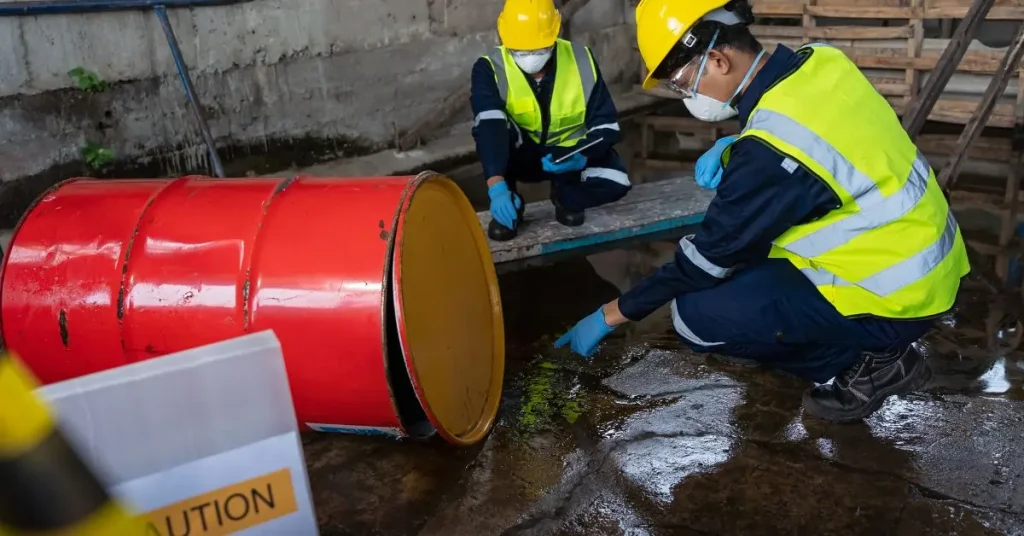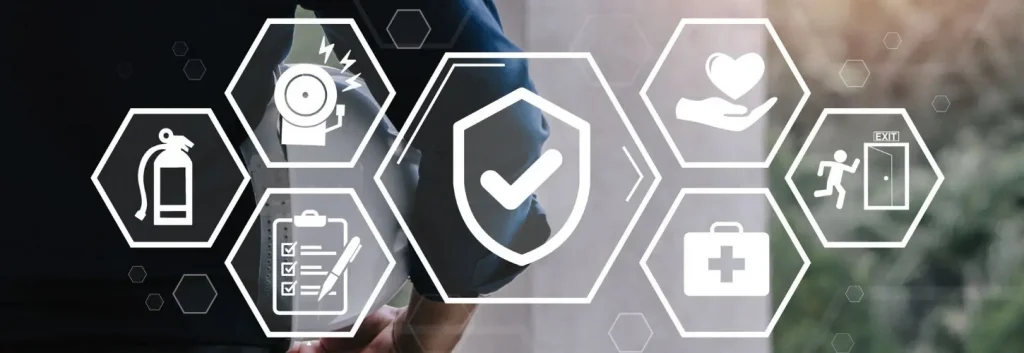Prioritising Frontline Employee Safety in Employee Experience
Frontline employee safety is not just a matter of policy; it’s a fundamental obligation that directly impacts both individual workers and the organisations they serve.
The safety equation for many companies is a relatively simple one: a safe environment equates to productive and happy employees. In reality, workplace safety – universally regarded as a non-negotiable – requires a multi-faceted approach to be successful.
The Significance of Workplace Safety
The scope of frontline employee safety has significantly shifted in recent years. While the focus on occupational health and safety standards, along with regulatory compliance to these, remains paramount to companies, new risks are emerging.
The challenges posed by theft and vandalism, which can cause significant damage to workplace infrastructure, coupled with unauthorised and illegal activities occurring within a company’s premises, add an extra layer of complexity to the ongoing safety concerns.
It’s therefore not surprising to see that as much as 58% of frontline workers feel that the possibility of harm in the workplace is on the rise.
The Link Between Frontline Employee Safety and Engagement
Employee engagement in safety reflects an employee’s level of involvement, commitment and enthusiasm for promoting a safe work environment. Engaged employees are more likely to adhere to established safety procedures, raise concerns about potential hazards and participate in safety training and drills.
Poor employee engagement in safety, can contribute to a more hazardous work environment by making employees less likely to follow procedures, report incidents, or prioritise safety.
As a result, it is critical for organisations to cultivate an engaging frontine employee safety culture. This can be accomplished, among other things, through effective communication, training, recognition, and incentive programmes.
Safety at Work

Alarmed by an increasing number of workplace accidents that were being reported, Britain’s national regulator for workplace health and safety decided to offer free workplace safety audits to companies.
As part of this exercise, recommendations were made to companies based on physical inspections of facilities and interviews with employees. The following were key recommendations at many organisations:
- Safety needs to be an executive level responsibility
- Safety initiatives should not be ‘standalone’ but integrated into work activities
- Incident reporting, investigation and monitoring frontline employee safety procedural changes need streamlining
- Safety communication should be ongoing and central to workplace discussions
The result of this intervention? In public sector entities, a 50% reduction in sickness absence through work related injury over a two year period and a similar reduction in injury incidence rate over a three year period. In the private sector, it resulted in a 17% reduction in sickness absence and 28% reduction in reportable incidents. This underscores the value that prioritising safety can bring to companies.
Frontline Employee Safety Feedback and Perspectives
‘This is a field we chose to work in but there’s also times where you feel that there’s a dangerousness to it.’ This quote, extracted from an occupational workplace safety survey, reflects the type of verbatim feedback surveys and frontline employee safety focus groups can surface in the workplace.
Many executives will instinctively react to this type of comment by seeking to eliminate the risk the worker is facing. While this is an appropriate approach, there is also the need to further engage employees to obtain their perspectives on a variety of issues. These include how safety risks can be eliminated and if substituting certain workplace activities can lower physical risk. It is also important to explore whether redesigning of tasks can reduce risk and assess individual training needs requirements.
In most organisations a blend of safety approaches, which are driven by regulatory compliance and internally developed practices, help to make frontline employee safety a workplace priority.
Implementing Safety Measures
In practical terms, implementing a safety first approach requires a company to take a number of steps to ensure that safety is top-of-mind. These include:
- Providing ongoing and appropriate safety training
- Developing a culture where safety is ‘owned’ by all workers
- Establishing priority critical communication channels for safety issues
- Leveraging appropriate technology to improve safety
There are also a variety of other factors that influence the success of safety implementation. In particular ensuring that training materials are up-to-date, ensuring training activities cater for various learning styles, using interactive approaches during training and measuring effectiveness, are important
Technology and Innovation in Frontline Employee Safety
Technology has altered the way businesses operate and has had a significant impact on workplace safety. Drones, for example, can be used to inspect work areas that employees may find difficult or dangerous to access. In those instances where drones are fitted with sensors, they can forewarn workers of dangerous gas leaks, temperature fluctuations and other environmental hazards, prompting them to initiate appropriate safety measures.
Not only will technology improve hands on operations for frontline workers, but it will also have an impact on administrative approaches related to safety. Blockchain technology – a decentralised database of activities that is secure and trustworthy – will promote completely transparent and anonymous reporting of safety hazards and incidents.
In addition to providing for anonymity, Blockchain platforms will require maintenance workers to update training, inspection, audit, and performance reports. Workers will submit this information only once, and it will become available to a range of relevant stakeholders.
This system will eliminate the need for duplicating resources to ensure due diligence and compliance. It will also alleviate many of the frustrations experienced by third-party or compliance regulators who are attempting to determine adherence to safety conformance protocols, during post-incident inspections.
Prioritising Frontline Employee Safety in Employee Experience with Wyzetalk
In the landscape of workplace safety, Wyzetalk’s employee engagement platform stands as a crucial tool for companies aiming to prioritize the well-being of frontline employees. Recognizing the complexity of safety considerations, Wyzetalk’s platform facilitates effective communication, a cornerstone in fostering an engaging workplace safety culture. Through this technology, companies can ensure that safety information, training, and recognition programmes are seamlessly communicated to frontline workers, promoting their active involvement in promoting a secure work environment.
The platform serves as a central hub for ongoing safety communication, making it easier for companies to integrate safety initiatives into day-to-day work activities. Furthermore, Wyzetalk’s features can streamline incident reporting so that hazards are all logged in one place for SHEQ officers can access the information, follow up on and take action, thus aligning with the recommended practices for a comprehensive safety approach.
Organisations should prioritise technology and innovation so as to adhere to and maintain safety standards, and using Wyzetalk’s platform they can. The speedy and transparent reporting of safety hazards and incidents aligns with Wyzetalk’s commitment to open and effective communication, ensuring that employees feel heard and valued in their safety concerns. In essence, Wyzetalk becomes a catalyst for companies looking to not only meet safety standards but exceed them, creating an environment where the safety of frontline workers is prioritized and actively nurtured.
Future Outlook
Safety, as a fundamental pillar of a positive workplace experience, will always be a crucial consideration for successful companies. In the future organisations will adapt their approach to include the following considerations:
- Circular economy – sustainability is increasingly key to all business operations and everything from the material that is used to manufacture personal protective equipment to the manner in which hazardous waste is handled, will be measured against sustainable outcomes.
- Ergonomics – companies will increasingly emphasise ergonomic design in order to reduce physical strain and avoid long-term health issues for frontline workers.
- Active safety – a new focus on pre-emptive safety behaviour will become the norm with the aid of technology, hazards will be identified in advance of safety incidents, increasing overall safety and productivity.
Advances in technology are going to provide new opportunities for companies to improve the conditions in which frontline workers operate and positively impact the overall workplace experience.
Key Takeaways
Unsafe and hazardous environments directly impact on worker experience. By involving workers in safety considerations and utilising technology companies can create an environment where workers feel their safety concerns are being heard and addressed. To start your frontline employee safety journey talk to an expert today.


